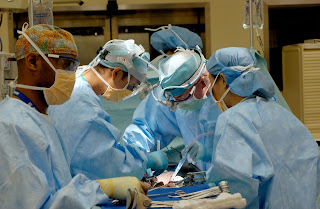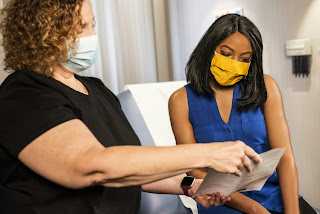Day in the life of a band 6 gastro/surgical dietitian
Hi everyone, 😊 If you follow me on Instagram you’ll see that I started a band 6 role in January! I started a gastroenterology/surgical role which means I cover 1 gastro ward and 2 general surgery wards, alongside a weekly gastro clinic. It’s a very busy caseload!
On the wards I might see patients that have had bowel
surgery, liver disease, pancreatitis, cholecystitis, and anything else in the
digestive system. In clinic I might see patients with coeliac disease,
irritable bowel syndrome (IBS), inflammatory bowel disease (IBD) or any other
gastro symptom.
A new part of my role is managing patients that are being fed via parenteral nutrition, also called PN. PN is when you receive nutrition directly into your veins. This is needed when a patient has a non-functioning bowel, or the bowel can’t be accessed as normal e.g. if there’s an obstruction somewhere in your digestive tract.
The nutrition someone
receives directly into their bloodstream is already ‘digested’ and broken down
into the smallest molecular components. PN is slightly more complex than when
feeding someone into their stomach and there’s an increased risk of infection.
I’m going to share a day where I have clinic in the
afternoon. Just to note, I’m not talking about any specific patients, but will
share typical patients I may see.
8.30: I’m in the office, checking my wards on our computer
system to see if the patients on our caseload are still in the hospital or
they’ve been discharged. We then do a huddle, which is a daily chat in the
morning for everyone to discuss their caseload. If someone has a lot of
patients to see and won’t be able to get through them all we can share them out
in this huddle.
I then prepare to see my patients. I check our online system
for their latest blood results, look at their weight charts, the stool charts,
and any other relevant information.
10am: I head to the wards to see my first patient. This
patient has oesophageal cancer, and the tumour is blocking their food pipe. They’re
unable to eat or drink as nothing can pass through where the tumour is. So that
means no food can get into their stomach as it’s blocked. This patient
needs PN until they get a stent to widen their oesophagus and allow food to be
eaten as normal. I calculate a suitable regime to meet their nutritional needs.
11.15: I see a patient that has had a cholecystectomy. This
is an operation to remove their gallbladder. After it’s been removed these
patients can resume a healthy balanced diet. This patient is having some post
operation nausea, which is completely normal, but means they're not up to
eating as much as usual. We discuss eating little and often, and I order extra
snacks for them to have during the day.
12:00: I review a patient that has chronic pancreatitis and has pancreatic exocrine insufficiency. This means that the pancreas doesn’t release enough digestive enzymes to support normal digestion. These patients require pancreatic enzyme replacements which are tablets they take just before food.
This patient is continuing to lose weight despite a good intake of food
and their nutritional supplement drinks. So, I speak to the doctors to increase
the dose of their enzyme tablets as they’re likely not taking enough to able to
digest and absorb all the nutrients in their food.
13:00: back to the office to do my admin and update the
spreadsheets with the patients I saw.
13:30: lunch time! Today I’m having chicken stir fry, and an
apple.
14:00: I start clinic! In a full clinic there are 6 patients, but today I
only have 4 patients as some people cancelled.
My first patient is a patient that has been newly diagnosed
with coeliac disease. These patients get an hour for their appointment. Coeliac disease is an autoimmune condition in which the
body reacts negatively to gluten, a protein found in wheat, barely, and rye.
The only treatment is a strict, lifelong gluten free diet. We go through everything from food labelling, avoiding cross contamination, and swaps for the gluten-containing foods they currently eat.
15:00: my next patient is a patient suffering from
constipation. The main dietary advice for constipation is to increase fibre and
fluid intake. I go through the patient’s diet, and we work out ways they can
increase how much fibre they’re eating.
15:30: this patient has inflammatory bowel disease (IBD) but
they're not in an active flare up. There isn’t a special diet for IBD, as it’s
not caused by food. With this patient, I go through ensuring a healthy balanced
diet and adequate nutrient intake. Patients with IBD will have increased
calcium requirements and also need to be aware of their vitamin B12, folate,
and iron intakes.
16:00: my last patient has IBS, and their main symptoms are stomach pain and diarrhoea. We discuss some general IBS lifestyle advice and a mini elimination
diet to exclude lactose (the sugar found in dairy products) to see if symptoms
resolve.
The second line of treatment for IBS is the low FODMAP diet
which is a highly restrictive diet to identify some of the potential dietary
triggers. FODMAPs are types of carbohydrates that everybody can’t digest, but
people with IBS have more pronounced symptoms due to this indigestion. The low
FODMAP diet is not suitable for everyone with IBS and should only be undertaken
with the guidance of a registered dietitian.
16:30: that’s my day! I’ll write up my clinic notes
tomorrow.
I hope this post gave you an insight into what a dietitian does. If you want to see what I got up to as a band 5, I’ve got a post here. I’ve also got a post about working in weight management here.
If you have any
questions feel free to comment below!
Bye for now 👋
Useful links:
.jpg)




.jpg)

.jpg)

Comments
Post a Comment